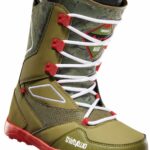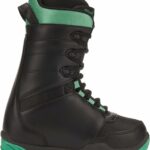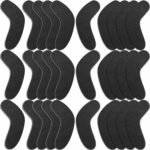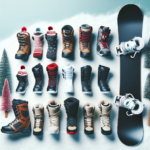You’ve probably wondered how much weight factors into choosing the right size snowboard. It’s a common notion to think size would matter, but is it really that simple? Your weight influences so many things in life – – could it really affect snowboard size as well? This article sheds light on this intricate relationship by examining the role weight plays in selecting the ideal snowboard.
Understanding Snowboard Sizes
Choosing the right snowboard is vitally important for all snowboarders. From providing the correct support to ensuring the best possible performance on the slopes, the fit of a snowboard is critical. But, what’s involved in determining snowboard size?
What is Snowboard Size
The size of a snowboard is defined by its length and width. Length is generally measured from the tip of the snowboard to its tail, and is usually described in centimeters. The width of a snowboard is the distance across its widest part, often the waist.
How Snowboard Sizes are Determined
Determining a snowboard’s size involves a combination of factors, including the rider’s weight, height, foot size, and even riding style and skill level. Weight plays a significant role, being key in selecting the best board for optimal performance.
The Role of Weight in Snowboarding
One cannot overemphasize the importance of weight in snowboarding. From performance to comfort and safety, your weight significantly impacts your snowboarding experience.
How Weight Affects Snowboarding
Weight plays a prominent role in how a snowboarder interacts with their board. A heavier rider will press more on the board due to increased gravity force, which can affect maneuverability, speed, and control on the snow.
Importance of Rider’s Weight in Choosing a Snowboard
A rider’s weight also plays a pivotal role in choosing a snowboard. Heavier riders generally require longer and wider snowboards to provide extra stability and control. A board that’s too small won’t offer the necessary support and could lead to a lack of balance and compromised performance.
Weight and Snowboard Length
A rider’s weight is also instrumental when determining the appropriate length of a snowboard.
How Weight Influences Snowboard Length
Typically, the heavier the rider, the longer the snowboard should be. A longer board provides a more substantial surface area, which helps distribute the rider’s weight more evenly, improving balance and control.
Choosing the Right Snowboard Length Based on Weight
Choosing the right snowboard length based on your weight is essential for optimal performance and safety. Heavier riders should opt for longer boards, while lighter riders can use shorter boards. Always refer to a snowboard size chart for accurate sizing.
Weight and Snowboard Width
Similar to board length, a rider’s weight impacts the requisite width of a snowboard.
Effect of Weight on Snowboard Width
Weight affects the snowboard’s width as it determines whether the snowboard can carry your weight without causing the board to “dig in” too much into the snow during turns, a phenomenon known as “heel drag” or “toe drag”.
Choosing the Right Snowboard Width Based on Weight
The choice of snowboard width based on weight should provide a comfortable stance. Snowboarders with a higher weight should typically go for wider boards to counteract potential heel or toe drag.
Weight and Snowboard Flex
Flex refers to the flexibility of a snowboard. The right amount of snowboard flex is essential for a smooth and controlled ride.
Understanding Snowboard Flex
Snowboard flex refers to the flexibility or stiffness of a snowboard. The flex of a board significantly affects its responsiveness, allowing you to make quick and sharp turns.
Impact of Weight on Snowboard Flex
Higher weight riders exert more force on the board, causing it to flex more. Consequently, a heavier rider might need a stiffer board as it will resist more bending under the increased weight.
Snowboard Size Charts and Weight
Size charts are the best way to get an accurate measurement of what size snowboard you should choose.
Interpreting Snowboard Size Charts
Snowboard size charts show the recommended board lengths based on a rider’s weight. They are designed to help you pick the right size snowboard without having to guess.
How Weight is Factored into Snowboard Size Charts
Most snowboard size charts list weight ranges at one axis and the recommended snowboard length on another. Your weight is a crucial metric you should consider when consulting the size chart.
Weight Variations and Snowboard Performance
Changes in weight can have a significant effect on your overall snowboarding performance. This becomes particularly important for riders who have experienced substantial weight gain or loss.
How Different Weights Can Alter Snowboard Performance
Heavier riders may find their performance compromised on a snowboard that is too small. Conversely, a rider who has significantly lost weight may find their large snowboard sluggish and hard to control.
Effects of Weight Changes on a Snowboard’s Performance
Weight fluctuations can impact how a snowboard performs. It could affect the board’s flex, response, stability and general control on the snow. Getting re-sized for a snowboard following significant weight changes is recommended.
The Effect of Other Factors on Snowboard Size
Other factors that can affect the size of your snowboard include your height, skill level, and preferred riding style.
Role of Height in Choosing a Snowboard Size
Although weight is paramount, height is also a valuable consideration. It can particularly impact your ability to direct the board during maneuvers.
Impact of Rider’s Skill Level on Snowboard Size
As a beginner, you might lean towards a shorter and less stiff board to help with learning control and balance. Advanced riders might prefer longer boards for increased speed and sharper turns.
How Riding Style Influences Snowboard Size
For those mainly freestyling, a shorter board is preferable because they are more maneuverable. Conversely, if you’re more into freeriding, then longer boards will provide you with better control at higher speeds and steeper terrain.
Common Mistakes When Choosing Snowboard Based on Weight
It’s all too easy to make mistakes when selecting a snowboard. These errors can seriously impact comfort and performance out on the slopes.
Overlooking Weight as a Deciding Factor
One of the biggest mistakes you can make is to overlook weight in choosing a snowboard. It is key to determining the correct length and width of the board.
Choosing a Snowboard That’s Too Large or Too Small
Choosing a board that’s too large or too small is another common mistake. A snowboard that’s too big can be hard to handle, while one that’s too small can lead to instability and poor control.
Expert Tips on Choosing the Right Snowboard Size Based on Weight
Choosing the right snowboard size based on weight takes careful consideration. Here are a few expert tips to guide you.
Considerations When Selecting a Snowboard Based on Weight
Always factor in your weight when selecting a board. If you’re in between two sizes, choose the larger one if you’re aggressive or ride in deeper snow, or the shorter one if you’re beginner or like riding in the park.
Advice from Professionals on Choosing the Right Snowboard Size
Seek expert advice if you have any doubts. Representatives in snowboarding stores or rental shops are ideally qualified to help assess your weight in relation to suitable board sizes.
- What Snowboard Bindings Should I Get? - January 23, 2024
- What Size Screws For Snowboard Bindings? - January 23, 2024
- How To Snowmobile On Water? - January 23, 2024










